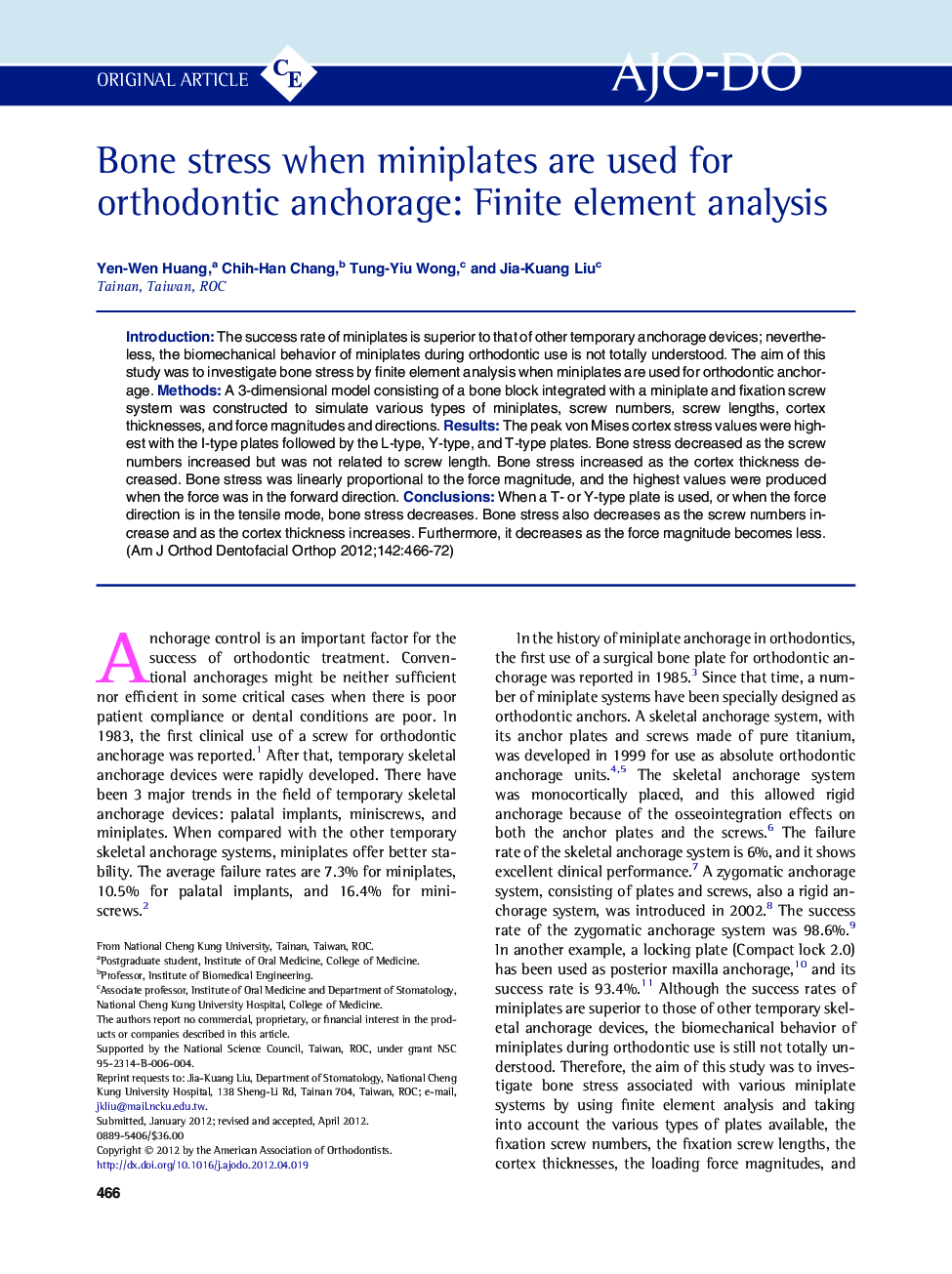| Article ID | Journal | Published Year | Pages | File Type |
|---|---|---|---|---|
| 3117016 | American Journal of Orthodontics and Dentofacial Orthopedics | 2012 | 7 Pages |
IntroductionThe success rate of miniplates is superior to that of other temporary anchorage devices; nevertheless, the biomechanical behavior of miniplates during orthodontic use is not totally understood. The aim of this study was to investigate bone stress by finite element analysis when miniplates are used for orthodontic anchorage.MethodsA 3-dimensional model consisting of a bone block integrated with a miniplate and fixation screw system was constructed to simulate various types of miniplates, screw numbers, screw lengths, cortex thicknesses, and force magnitudes and directions.ResultsThe peak von Mises cortex stress values were highest with the I-type plates followed by the L-type, Y-type, and T-type plates. Bone stress decreased as the screw numbers increased but was not related to screw length. Bone stress increased as the cortex thickness decreased. Bone stress was linearly proportional to the force magnitude, and the highest values were produced when the force was in the forward direction.ConclusionsWhen a T- or Y-type plate is used, or when the force direction is in the tensile mode, bone stress decreases. Bone stress also decreases as the screw numbers increase and as the cortex thickness increases. Furthermore, it decreases as the force magnitude becomes less.
